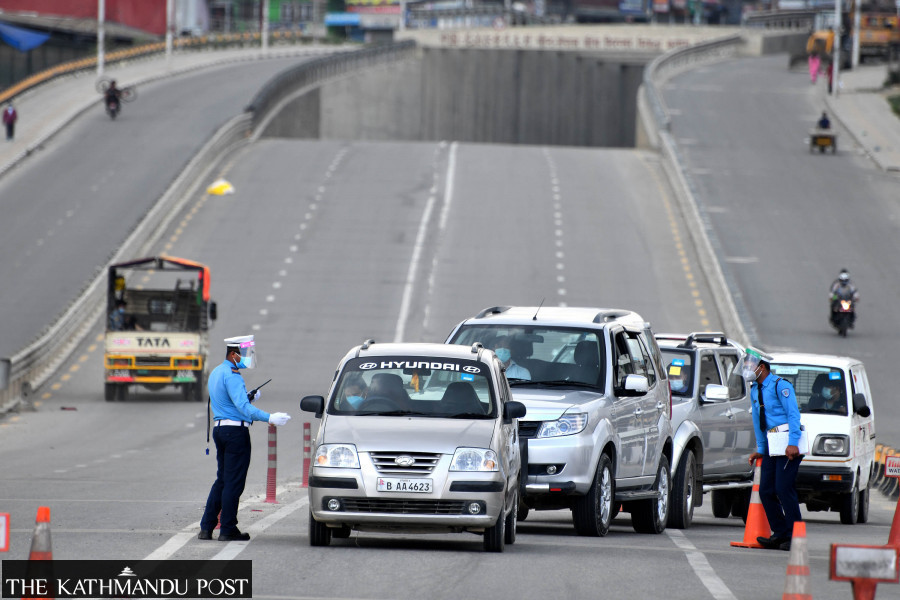Local governments can allow schools to run in-person classes by following health protocols.

Local governments can allow schools to run in-person classes by following health protocols. Post File Photo
The district administrations of the Kathmandu Valley have further eased the Covid-19 restrictions allowing conditional reopening of schools.
The District Administration Office, Kathmandu in a notice on Wednesday said local administrations after obtaining permission from the District Covid-19 Crisis Management Centre may allow schools under their jurisdictions to reopen. The notice however says school reopenings should be guided by the concept of ‘smart lockdown’, which allows local administrations to impose different levels of restrictions in different areas depending upon the severity of the Covid-19 situation.
“We have not exactly given permission to reopen schools. But any school wishing to reopen can do so by obtaining permission from the local unit concerned and the District Covid-19 Crisis Management Centre,” said Dhundi Prasad Niraula, chief district officer of Lalitpur.
Kathmandu’s Chief District Officer Kali Prasad Parajuli said the decision was taken considering the schools that are unable to conduct online classes and those that can conduct in-person classes by properly following the health protocols.
“But the schools should take permission from the local bodies concerned and the ward offices should constantly assess the Covid-19 transmission situation in such schools,” said Parajuli.
The chief district officers of Kathmandu, Lalitpur and Bhaktapur, after a meeting on Wednesday, have announced that some Covid-19-related restrictions will remain until September 16. While the notice is silent about the restriction on night-time businesses, ‘unnecessary crowding’, gatherings and processions still remain banned. But restaurants have been allowed to operate dine-in services.
In his earlier conversation with the Post a week ago, Kathmandu CDO Parajuli had explained the idea of 'smart lockdown’ as selective sealing of areas with higher Covid-19 cases.
On August 16, the Covid-19 Crisis Management Centre had issued a circular to all the district administration offices throughout the country to enforce smart lockdowns by dividing districts, local units or areas into red, amber, yellow, and green zones and impose restrictions accordingly as per the risk status, but none of the districts or local units have enforced localised restrictions to date
Schools, however, have started to reopen in many places in the country including in Kathmandu Valley. The Gokarneshwar Municipality in Kathmandu decided resume in-person classes starting Tuesday.
Public health experts see the government decision being at fault every time and there is a lack of coordination between their own bodies.
“With this decision, people will understand that there is no Covid-19, and this could further complicate the situation,” said Dr Baburam Marasaini, a former director at the Epidemiology and Disease Control.
“Until the World Health Organisation says the virus threat is over, our government should not lift the restrictions. But the government’s recent decision has conveyed the message that there is no virus,” said Marasaini.
He says before allowing schools to reopen, the government should have worked out a separate health protocol making PCR or antigen tests mandatory for students and teachers. “More than that, schools need to make modifications to their infrastructure to ensure the students and teachers remain protected from the virus,” he added.
Marasaini said government officials have been making impractical decisions because they don’t listen to experts.
Last week, following widespread criticism of the restriction on vehicular movement after 8pm, the authorities backtracked on their decision. The authorities on August 12 had announced the restriction on vehicular movement at night apparently to discourage people from partying and eating out.
With the major festive season nearing and the Capital’s businesses districts seeing an increased public mobility, experts have been fearful of a new Covid-19 spike. Last week, on the day of Jani Purnima, Valley’s temples were crowded with devotees barely following the Covid safety protocols including physical distancing.
Despite the authorities’ decision to further ease the restrictions, the virus infection rate has not come down markedly since the major easing of restrictions a month ago.
On Wednesday, the country reported a 1,648 new coronavirus cases with 20 Covid-19 related fatalities, according to the Ministry of Health and Population.
In June 20, when the prohibitory orders were eased, Nepal had recorded 1,421 infections and 51 Covid-19-related deaths. Similarly, on Tuesday 1,523 new coronavirus cases were reported taking the nationwide infection tally to 762,647.













